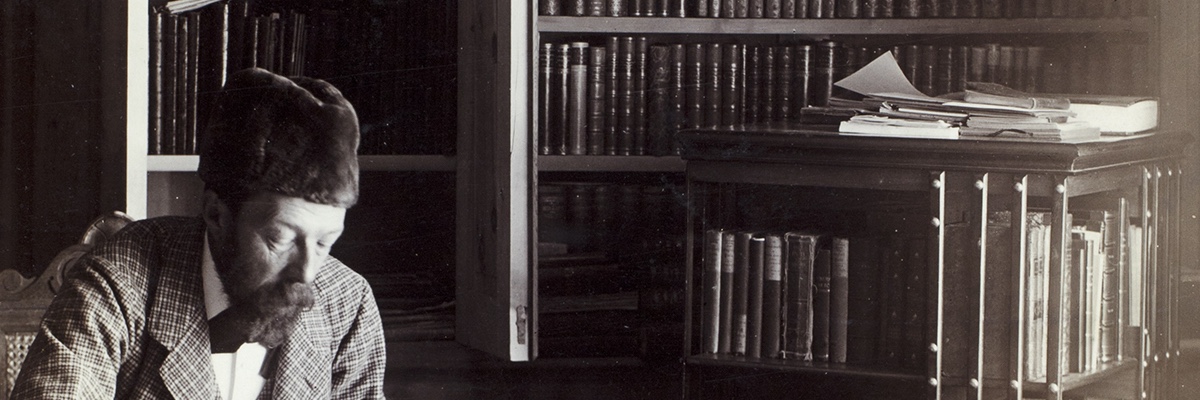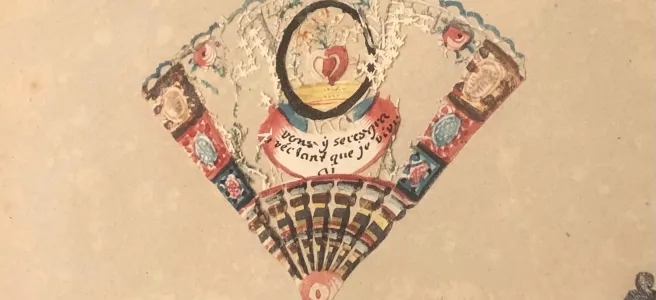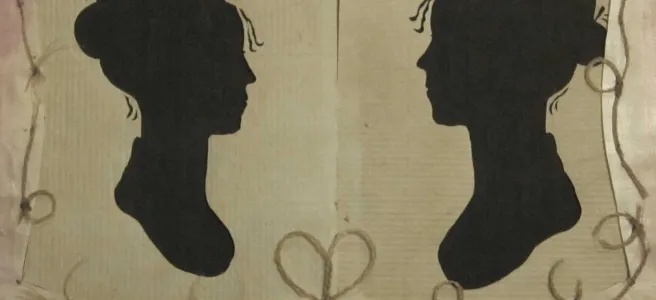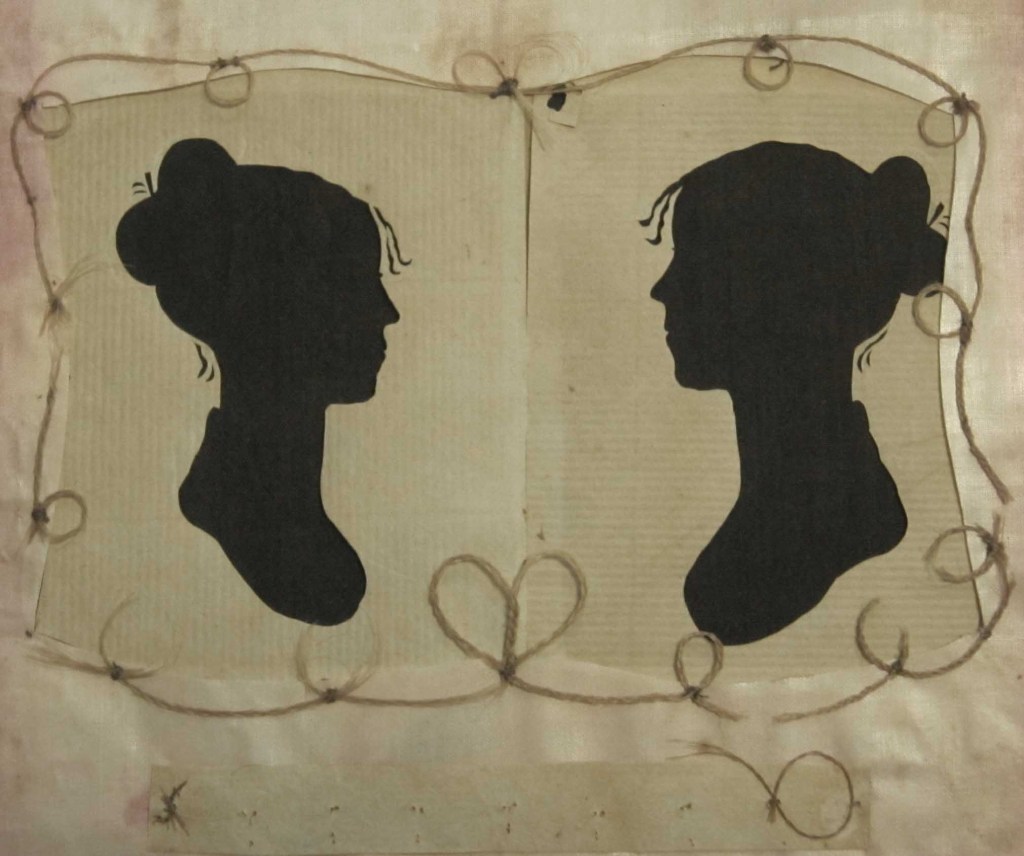The commonplace book developed in the hands of sixteenth- through nineteenth-century European women as a form of privatized intellectual engagement. A dearth of formal women’s education and an emphasis, rather, on domestic skills both necessitated the search for academic outlets and provided women with ample time to find them. Women turned to commonplace books to fulfill their intellectual needs by engaging meticulously with contemporary literature, drawing or cutting out illustrations, and filling pages with their reflections and musings.
Sophia Elers was one such woman. Although we do not know much about her as a person besides her likely residence in the Bickenhill Vicarage, and, based upon this residence, her being in an elite, educated family of clergymen,1 we do know that she traveled intellectually in her Victorian-era commonplace book, beginning with her transcription of a lengthy passage from William Edward Parry’s 1824 Journal of a Second Voyage for the Discovery of a North-West Passage from the Atlantic to the Pacific.2 Elers supplemented the passage with her own painstakingly detailed illustrations, which depict the “Snow Village of the Eskimaux”3 and “Eskimaux Man & Woman of Savage Island.”4 In this brief foray into Parry’s writings, Elers established herself as his colleague – adding and eliding words and visual representations – and entered into the literary tradition characterized by and filled with her male peers.

So, too, did Elers venture into France with clippings from a book of French women’s clothing5 and into Asia with an imagined, silhouetted scene cut from thick black paper and a meticulously carved fan.6 These intellectual travels, however, appear not to be associated with any specific text, but rather exist as mere longings for exploration or otherness that was unsupported by the little education Elers likely did receive, which Elers intimates once again by randomly populating the bottom third of a page filled with arithmetic with a cut-out rabbit sitting in the grass:7 even the illustrations seem to be hoping to be removed from the dull arena in which she was situated.
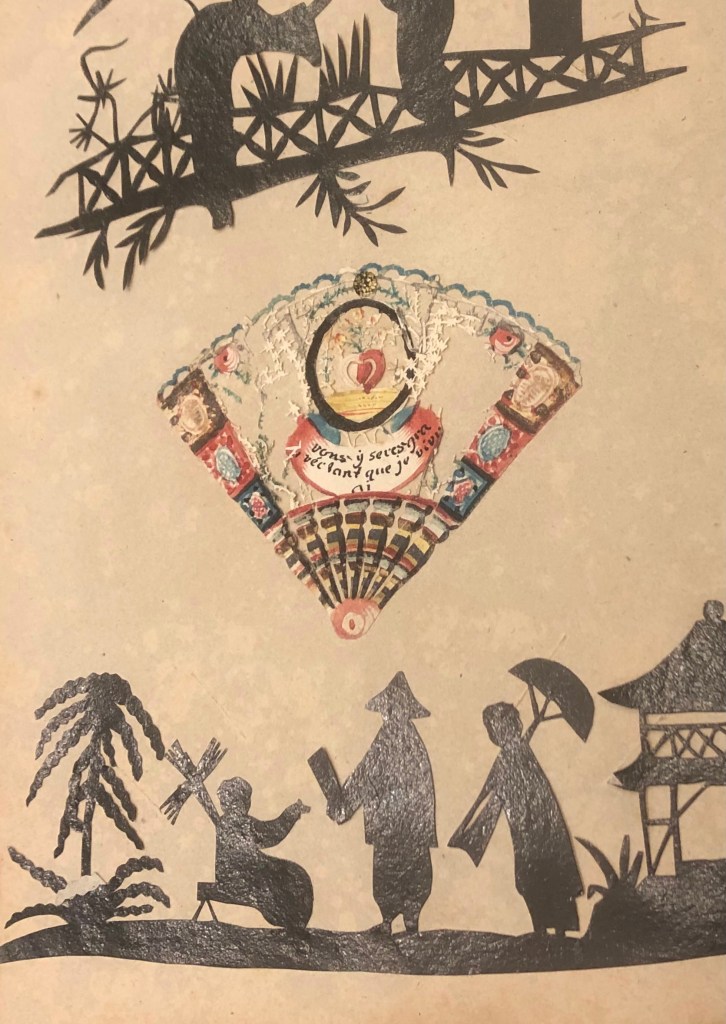
Particularly striking in Elers’ work, though, is the series of questions she posed. Whether they are philosophical ones, riddles, or jokes missing their punchlines is unclear, but these questions do work to express Elers’ unanswered desire to engage intellectually with someone other than herself. She asks,
Why is a large E like London?
Can you look at In till you make it a word of four syllables?
What Island is the lightest colour?
When are eggs like a stolen game?
and many more.8
British women in the mid nineteenth century had few opportunities to receive an advanced education. Although some feminist debate sparked around this period surrounding the fitness of women to enter academic settings and universities, nearly a century remained before these feminist longings were properly addressed and women were incorporated into a coeducational scholarly arena. Elers’ attempt to liberate herself and travel through the work in her book helps, though, to emphasize the important self-educations that took place and paints education during this time as “fundamentally identified with women’s personal, intellectual, emotional and spiritual emancipation.”9 Formal women’s education during this period, however, fell prey to patriarchal structures, enforced largely by the Miltonic and adjacently influential structures of male dominance and “benevolent patriarchs.”10
And so, the book of Sophia Elers can be seen as representative of a woman’s intellectual yearning during the Victorian era. Charlotte Symonds, to whom John Addington Symonds addressed most of his early letters, likely worked similarly in her own commonplace books, which we, unfortunately, do not have, and with the pieces of writing and literary recommendation provided to her by her brother. Instead, we must turn to these snapshots of life that Sophia Elers has provided to imagine how Charlotte Symonds might have filled the time left available after responding to her brother, fulfilling his library requests, and consuming the novels he lauded.
1. Circuit, Carol, The practice of concealment: Developing social history from physical evidence: a detailed exploration of artefacts hidden within a Victorian chaise longue and an interpretation of the significance of the contents (Buckinghamshire New University, Coventry University, 2017).
2. Parry, William Edward, Journal of a Second Voyage for the Discovery of a North-West Passage from the Atlantic to the Pacific, Performed in the Years 1821 – 1822 – 1823. in His Majesty’s Ships Fury and Hecla Under the Orders of Captain William Edward Parry, R.N., F.R.S., and Commander of the Expedition (London: Published by authority of the Lord’s Commissioners and Admiralty, 1824).
3. Elers, Sophia, Commonplace Book, 5.
4. Ibid., 11.
5. Ibid., 62.
6. Ibid., 56.
7. Ibid., 64.
8. Ibid., 47.
9. Schwartz, Laura, “Feminist thinking on education in Victorian England,” Oxford Review of Education, 37, 5 (2011): 679.
10. Kowaleski-Wallace, Beth, “Milton’s Daughters: The Education of Eighteenth-Century Women Writers,” Feminist Studies 12, 2 (1986): 275.
